In modern infrastructure, selecting the right piping material is crucial, with High-Density Polyethylene (Hdpe pipe) and Polyvinyl Chloride (PVC Pipe) standing out as leading thermoplastic choices. Both are extensively utilized in residential, commercial, and industrial settings for transporting various substances. A thorough understanding of the distinctions between hdpe pipe vs pvc is essential for engineers, contractors, and project managers. This article will provide a detailed comparison of their properties, performance characteristics, installation nuances, and common applications to guide your material selection process effectively.
Similarities: What HDPE and PVC Have in Common
Despite their differences, hdpe pipe vs pvc share several valuable attributes that contribute to their widespread use. Both materials boast impressive durability and are remarkably lightweight, which significantly eases handling, transportation, and installation processes. They are equally proficient in carrying various gases and liquids, making them versatile for diverse infrastructure needs. Furthermore, both HDPE pipe and PVC Pipe exhibit excellent resistance to corrosion, bacterial growth, and chemical buildup, qualities that make them well-suited for long-term underground and underwater installations in challenging environments.
Need reliable HDPE grades for your piping project?
For high-quality HDPE raw materials, including HDPE EX3, HDPE PE80, CRP100B and HDPE PE100 grades, contact us directly to discuss your specific piping project needs.
HDPE vs PVC: Key Differences Compared
While both are formidable choices for piping, a quick comparison reveals the core distinctions that set them apart. The primary difference often highlighted in the debate of hdpe pipe vs pvc lies in their inherent flexibility and rigidity, which impacts their installation and performance.
| Feature | HDPE Pipe | PVC Pipe |
|---|---|---|
| Flexibility | Highly flexible, ductile | Rigid, less flexible |
| Joints | Heat fusion (seamless, leak-free) | Bell & spigot, solvent cement (more joints) |
| Durability | Excellent impact resistance, long lifespan | Good, but more prone to brittle cracking |
| Temperature | Wider operating temp range | Limited cold-weather flexibility |
| Temperature Range | -15°C to 60°C | -10°C to 100°C |
| Installation | Trenchless, tight bends | Traditional trenching, straight runs |
Detailed Comparison: HDPE vs PVC Pipe Properties
A deeper dive into material properties reveals key distinctions between hdpe pipe vs pvc, guiding their optimal use.
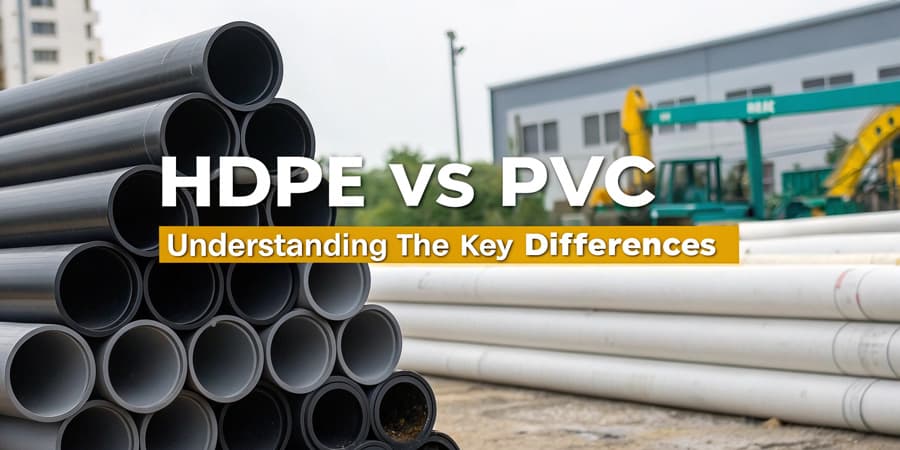
Chemical Structure and Material Make-up:
PVC Pipe is derived from polyvinyl chloride, a rigid, amorphous polymer formed from vinyl chloride monomers. HDPE pipe, conversely, is a polyethylene thermoplastic produced via ethylene polymerization. This fundamental difference in chemical structure directly influences their mechanical and thermal behaviors, making them suited for different demands.
Density and Stiffness:
In terms of density, PVC is significantly heavier, typically ranging from 1.3 to 1.45 g/cm³, resulting in its characteristic rigidity. HDPE, with a density of 0.93 to 0.97 g/cm³, is lighter and considerably more flexible. This lower density allows Hdpe pipe to absorb stresses more effectively without fracturing, a key aspect of HDPE vs PVC strength.
Flexibility and Brittleness:
The inherent flexibility of HDPE, a viscoelastic and ductile material, allows it to bend considerably without breaking, offering excellent impact resistance. PVC, being amorphous and more rigid, tends to be brittle, especially at lower temperatures. This makes it more susceptible to cracking and brittle failure when subjected to sudden impacts or stresses, a critical point in hdpe pipe vs pvc
Temperature Resistance and Thermal Performance:
HDPE maintains its flexibility down to -40°C and can operate continuously up to 60°C. PVC’s rigidity increases notably in cold conditions, making it more prone to cracking. While rigid PVC Pipe also tolerates continuous use up to 60°C, the presence of plasticizers in some PVC formulations (notably flexible PVC, distinct from HDPE vs UPVC pipe, which is unplasticized) can affect its cold-weather flexibility.
UV Resistance:
For outdoor applications, UV resistance is vital. HDPE inherently offers good resistance to ultraviolet radiation. However, PVC Pipe needs UV inhibitors or protective coatings if exposed to direct sunlight for prolonged periods, as UV radiation can cause degradation, embrittlement, and discoloration, particularly during storage and transport before installation.
Long-Term Durability and Service Life:
Both materials offer impressive longevity. HDPE pipes are frequently rated for 50 to over 100 years of service life, thanks to their exceptional resistance to environmental stress cracking, abrasion, and fatigue. PVC pipes also offer excellent durability, typically lasting 50 years or more. The ultimate choice between hdpe pipe vs pvc for long-term projects depends heavily on specific environmental conditions and anticipated mechanical stresses.
Stress Performance: HDPE vs PVC Under Pressure
The ability of a pipe to withstand operational stresses is crucial, distinguishing hdpe pipe vs pvc in demanding environments.
Pressure Handling:.
While both handle standard pressures, HDPE excels with pressure surges, tolerating transient pressures up to twice its class rating. PVC, though strong, has a lower surge capacity, typically around 100 psi above its rating. Hdpe pipe also offers better flow rates due to smoother internal surfaces and reduced friction loss
Resistance to Water Hammer and Fatigue:
Hdpe pipe’s ductile nature provides superior resistance to water hammer and fatigue cracking—reportedly up to 2,500 times more resistant than rigid PVC Pipe. This resilience is a critical aspect of HDPE vs PVC strength when systems experience frequent pressure fluctuations.
Chemical Resistance and Compatibility:
Both resist many common acids and bases. However, Hdpe pipe generally offers broader resistance, performing well with chemicals like concentrated sulfuric acid and lubricating oils. PVC can be more susceptible to certain strong oxidizing agents, such as highly concentrated nitric acid or chlorine, over prolonged exposure.
Installation and Joining Methods for HDPE and PVC Pipes
Installation techniques represent a significant difference between hdpe pipe vs pvc, impacting project efficiency and long-term integrity.
- How HDPE and PVC Pipes are Joined: HDPE pipe is typically joined through heat fusion, creating a seamless, leak-free connection as strong as the pipe itself. Conversely, PVC Pipe commonly uses bell and spigot joints with rubber gaskets or solvent cements. These methods create more individual joints, increasing potential points of leakage compared to HDPE’s monolithic system.
- Flexibility in Installation (Bend Radius): The inherent flexibility of HDPE allows for much tighter bend radii than rigid PVC, reducing the need for costly fittings to navigate curves or obstacles. This flexibility often simplifies trenching requirements and allows for more adaptive routing.
- Installation Advantages: HDPE’s fusion capabilities allow pipes to be joined above ground and safely installed into narrower trenches. This also makes HDPE pipe highly suitable for trenchless technologies like pipe bursting, minimizing ground disruption and speeding up project timelines, a key advantage in HDPE pipe vs. PVC installation comparisons.
HDPE vs PVC: Best Applications and Use Cases
The distinct properties of each material lead to specific preferred applications, guiding the choice of hdpe pipe vs pvc for various projects.
- Where Hdpe pipe is Commonly Used: HDPE pipe is extensively used for critical infrastructure like water and gas mains, sewage, irrigation, and stormwater drainage. Its durability also makes it ideal for mining, industrial processes, and electrical/communications conduits, often replacing metallic or concrete pipelines.
- Where PVC Pipe is Commonly Used: PVC Pipe finds widespread use in residential and municipal sectors for water mains, chemical transfers, stormwater drainage, and extensively in sewage collection networks. It’s also a common material for household plumbing (DWV) and irrigation systems.
- Choosing the Right Pipe for Specific Systems: For high-pressure and critical systems like natural gas or drinking water, Hdpe pipe is often preferred. In contrast, PVC Pipe typically dominates municipal wastewater and residential DWV systems. The final decision on hdpe pipe vs pvc always depends on the specific system’s requirements.
Cost Analysis: Is HDPE or PVC More Cost-Effective?
Analyzing hdpe pipe vs pvc costs involves more than just upfront material prices. While PVC Pipe often has lower initial material costs, Hdpe pipe can prove more cost-effective during installation due to faster processes and less transport damage. Its superior durability and longer lifespan also lead to significant long-term savings from reduced maintenance and replacement. Thus, when considering total lifecycle expenses, HDPE vs PVC cost calculations often favor HDPE as the more valuable investment.
| Criteria | HDPE Pipe | PVC Pipe |
|---|---|---|
| Initial Material Cost | Generally higher | Typically lower |
| Installation Cost | Lower due to flexible joints, fewer fittings, and ease of fusion welding | Higher due to rigid joints and more fittings required |
| Transport & Handling | Lightweight and flexible – less risk of damage | More brittle – higher risk of cracking or damage during transport |
| Durability | Highly resistant to corrosion, impact, and ground movement | Moderately resistant, but more prone to cracking under stress |
| Lifespan | 50–100+ years | 25–50 years |
| Maintenance Requirements | Low – joints are leak-free and resilient | Higher – joints can leak and crack over time |
| Environmental Resistance | Excellent – UV, chemicals, and ground shifts | Good – but less flexible under stress |
| Total Lifecycle Cost | Lower in the long term | Lower in the short term, higher over time due to replacements/repairs |
| Value as Investment | More cost-effective over time |
More affordable initially
|
Environmental Considerations:
Considering hdpe pipe vs pvc from an environmental perspective, Hdpe pipe is highly recyclable and can be repurposed into new products, fostering a circular economy. In contrast, PVC Pipe recycling is more complex and limited due to its chemical composition and additives, posing greater challenges for sustainable disposal.
Why PVC Over HDPE? (Specific Scenarios Choose)
While hdpe pipe vs pvc generally favors HDPE in many modern applications, PVC can be the preferred choice in specific scenarios. This includes projects with tighter budget constraints where initial material cost is paramount, applications requiring high stiffness or rigidity, certain specific chemical compatibilities where PVC might offer better resistance, or systems demanding higher static pressure ratings.
Conclusion: Selecting the Right Pipe – HDPE or PVC?
In conclusion, both hdpe pipe vs pvc offer distinct advantages and disadvantages. The optimal choice depends heavily on your specific application, evaluating factors like initial and long-term cost, durability, chemical resistance, pressure rating, and temperature tolerance. Consulting experienced experts is always recommended to ensure you select the most suitable material for the success and longevity of your piping project.


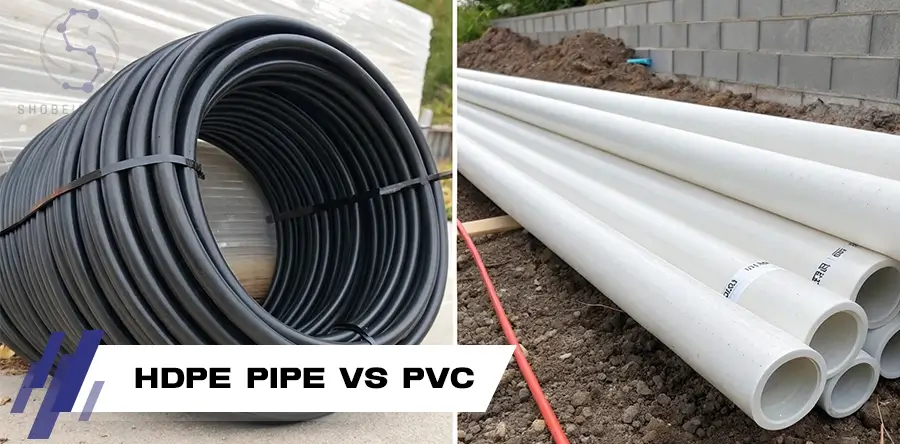
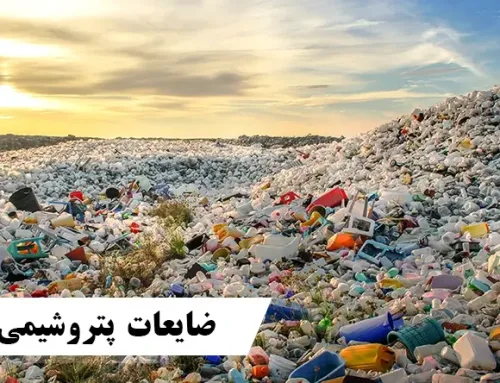
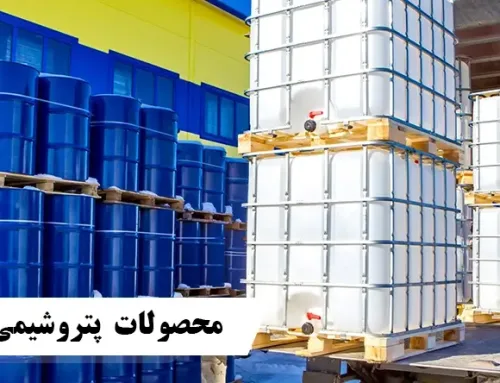
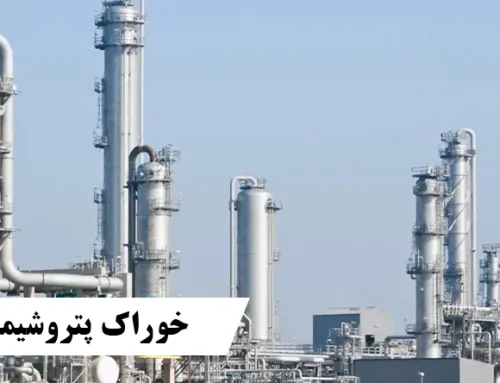
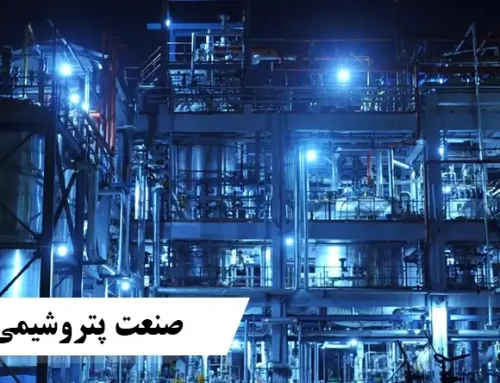
درج دیدگاه